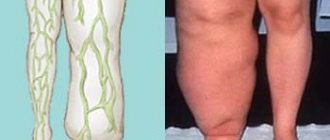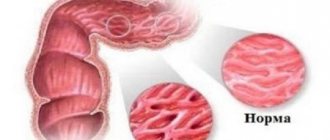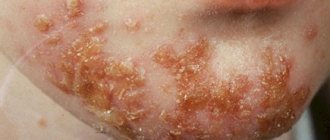Forms of neuroblastoma
Depending on the location, experts distinguish four forms of the disease. Each of them has its own distinctive features and specific localization.
- Medulloblastoma. It is formed in the cerebellum, which makes surgical removal almost impossible. Metastases form rapidly, and the first symptoms are manifested by impaired coordination of movements.
- Retinoblastoma. This type of malignant tumor is characterized by damage to the retina of the eyes. In later stages and if left untreated, it leads to blindness and metastases to the brain.
- Neurofibrosarcoma. Location: abdominal cavity.
- Sympathoblastoma. A malignant tumor affecting the sympathetic nervous system and adrenal glands. Formed during the prenatal period, it can affect the spinal cord and lead to paralysis of the lower extremities.
Modern approach to treatment
Standard treatment includes chemotherapy, surgery and radiation therapy. There are also many alternative techniques that are in clinical trials.
The team of doctors providing treatment usually includes: a surgeon, hematologist, neurologist, endocrinologist, social worker, psychologist, neurologist, radiologist and others.
Treatment is sometimes accompanied by side effects, the severity of which depends on the specific drug used in chemotherapy or the dose of radiation therapy. The most common side effects are:
- weakness and apathy;
- deterioration of perception;
- memory problems;
- secondary cancerous tumors.
The most common method of treatment is surgery. Doctors try to remove as many cancerous cells as possible. Surgical treatment is limited if the disease is diagnosed in the initial stages.
In some cases, after radiation or chemotherapy, it becomes possible to remove the tumor. Modern treatments may often involve removal of metastases.
Internal and external radiation therapy is also carried out. In internal radiation therapy, a source of radioactive radiation is injected directly into the tumor; in external radiation therapy, the patient is irradiated using a special device - a linear accelerator, or gamma knife.
Due to the fact that the tumor is most often diagnosed in children under one year of age, the role of radiation therapy has recently been relegated to the background. This is associated with a high risk of complications and negative consequences.
Radiation therapy is used if:
- chemotherapy does not provide sufficient effect;
- there is a tumor, inoperable or with a large number of metastases, resistant to the use of modern drugs.
The radiation dose depends on age and other individual indicators of the body and is approximately tens of Grays. Recently, the use of radioactive iodine, which, according to research, accumulates in neuroblastoma, has been widely studied.
Among the medicinal methods, chemotherapy is used. The essence of chemotherapy is the administration of special drugs - poisons that destroy tumor cells.
Antibody therapy is also used, in which immune cells specially developed in the laboratory are introduced into the body to recognize and attack tumor cells. The results of the experiments show that the likelihood of remission and prolongation of life in children who received a course of chemotherapy along with a bone marrow transplant is higher.
Depending on the stage, treatment for neuroblastoma is as follows:
- stage I and IIA : surgical removal of the tumor is performed with subsequent observation of the patient;
- stage IIB : first chemotherapy, then removal;
- stage III and stage IV : surgical treatment is performed, if possible, followed by high doses of chemotherapy and bone marrow transplantation.
Diagnosis of the disease
Diagnosis of the disease includes a number of laboratory and instrumental studies:
- Urine is tested for catecholamine levels.
- Blood is required to study ferritin with membrane-bound glycolipids and an indicator of neuron-specific enolase.
- The retroperitoneal space, abdominal cavity, and pelvic area are diagnosed using ultrasound, computed tomography and magnetic resonance imaging.
- The chest is examined using radiography and computed tomography.
- Radioisotope scintigraphy allows you to identify distant foci of pathology.
- A bone marrow puncture is performed to study the structure for the development of cancer pathogens.
- In other organs, a biological sample is examined after surgery for a biopsy.
Taking a biopsy
The unpredictable nature of neuroblastoma in a child
Neuroblastoma is a malignant neoplasm, and its course is rapid and quite difficult for a child.
In 85% of cases it occurs in the retroperitoneal space, in 15-18% of cases it affects the adrenal glands. According to statistics, this disease occurs in one out of one hundred thousand children. The malignancy of the tumor is explained by the uncontrolled division of cells produced by the patient’s own body, which cannot be treated with antibiotics or other drugs without a similar effect on other cells. As is the case with cancer, neuroblastoma cells have the ability to separate from the general mass and, through the flow of blood or lymph, metastasize throughout the baby’s body.
The unpredictability of neuroblastoma lies in its ability to self-destruct. No one can explain how or why this happens, but neuroblasts incredibly transform into neurons and stop dividing. Neuroblastoma transforms into ganglioneuroma, a benign tumor that can be easily removed surgically.
Neuroblastoma can metastasize to any place in the body, but most often to the adrenal glands, bone marrow, lymph nodes, and bone marrow. Extremely rarely - into the liver, skin and other organs. Tumor cells behave like healthy ones and tend to form organs of the nervous system. They are actively directed towards the brain, but neuroblastoma affects the brain extremely rarely.
With treatment in the early stages, you can achieve good results and even complete recovery. Inexplicably, even with a large number of metastases, the neuroblast can mature, degenerate, and complete recovery occurs.
The unique nature of neuroblastoma
Neuroblastoma in children is the most common malignant tumor; it accounts for up to 15% of all registered neoplasms of the neonatal period and early childhood. Basically, neoplasia is detected before the age of 5, although there are cases of tumor detection at 11 or even 15 years of age. As the baby grows and develops, the likelihood of encountering this type of cancer decreases every year.
Meanwhile, not all small clusters of immature cells found in small children under 3 months of age are doomed to become a tumor. There are chances to avoid the development of an oncological process, since some foci of neuroblasts begin to spontaneously mature without any intervention and become real nerve cells.
It is possible that the proportion of neuroblastomas among other pathologies of newborns is much higher than statistics indicate, because this type of tumor can be asymptomatic, then regress, and no one will know that it even occurred if there were no other reasons for an in-depth examination of the baby. This is one, but not the only, feature of neuroblastoma.
A neuroblast tumor is endowed with amazing abilities, some of which are even difficult to imagine in other malignant neoplasms:
neuroblast structure
- It may be distinguished by a special tendency to uncontrollable aggression to metastasize to places that it chooses. Most often, the skeletal system, lymphatic and bone marrow suffer from metastases. Meanwhile, although rare, neuroblastoma metastases are found in the liver and skin. The assumption that a neuroblastoma located somewhere in the abdominal cavity will “get interested” in the brain and “wreak evil” there belongs to the category of exceptions.
- Sometimes foci of neuroblasts grow, divide, form a tumor, which first gives metastases, and then exhibits the ability to independently stop growing, regress (regardless of its volume and the presence of metastases) and disappear, as if it never existed at all. Other malignant tumors certainly cannot do this.
- A neoplasm, initially classified as an undifferentiated tumor, can suddenly show a tendency to differentiate, or even (which is less common) begin to mature and turn into a benign process - a ganglioneuroma, which, in fact, is a mature neuroblastoma.
The reasons for the immaturity of germ cells and the development of a tumor process at the site of their accumulations have not yet been precisely determined. It is assumed that the lion's share (up to 80%) of all neuroblastomas arises for no apparent reason at all and only a small part has an autosomal dominant hereditary nature.
The likelihood of a tumor developing from a focus of neuroblasts increases with the child's age. In addition, a number of scientists have proven that the risk of having neuroblastoma is higher in children with congenital malformations and immunodeficiency.
Other localizations of tumors of neurogenic origin
Neuroblastoma of the posterior mediastinum in children is accompanied by sudden weight loss, difficulty swallowing, and respiratory distress. In some cases, the disease leads to changes in the shape of the chest.
Tumors of the retro-orbital space are extremely rare, but more is known about them. This is due to the fact that all signs of the pathological process are visible to the naked eye. The neoplasm is characterized by the appearance of a dark spot on the eye, which looks like a regular bruise. Another symptom of neuroblastoma is a drooping eyelid. It covers the unnaturally protruding eyeball.
How does this “special” tumor manifest itself?
At the initial stage of development of the process, there are no specific symptoms specific to the tumor, which is why neuroblastoma is mistaken for other childhood diseases.
The symptoms of the disease depend on the location of the primary tumor, areas of spread of metastases, and the type and level of vasoactive substances (for example, catecholamines) that the tumor produces. Most often, the primary tumor node finds its place in the retroperitoneal space, namely, in the adrenal glands. In more rare cases, it is located in the neck or mediastinum.
Neuroblastoma of the retroperitoneum
typical localizations of neuroblastoma
A tumor from tissue of neurogenic origin, arising in the retroperitoneal space, usually grows quickly and in a short time penetrates the spinal cord canal, forming a dense, stone-like formation that can be detected by palpation. In other cases, the neoplasm “leaks” into the retroperitoneal space through the opening of the diaphragm from the chest and, trying to expand its territory, begins to displace its “neighbors.”
Neuroblastoma of the retroperitoneal space (including an adrenal tumor) initially does not have any specific clinical manifestations until it reaches a large size and begins to oppress neighboring tissues. Symptoms that suggest something is wrong in a given region include:
- The presence of a dense tuberous formation in the abdominal cavity;
- Discomfort, pain in the abdomen and lower back;
- Edema;
- Loss of body weight;
- Changes in laboratory parameters indicating the development of anemia (decrease in the level of hemoglobin and red blood cells);
- Increased body temperature;
- Penetration of the neoplastic process into the spinal cord canal can result in problems in the lower extremities (weakness, numbness, paralysis) and a disorder in the functional abilities of the excretory system and gastrointestinal tract.
Other localization of a tumor of neurogenic origin
Neuroblastoma of the mediastinum is accompanied by symptoms of distress in the chest:
- Characteristic signs of neoplasia of any localization (weight loss, fever, anemia);
- Respiratory disorders, persistent cough;
- Difficulty swallowing, permanent regurgitation;
- Changes in the shape of the chest.
A tumor located in the retrobulbar (behind the eye, that is, behind the eyeball) space, although not so common, is known more about it. This is explained by the fact that the symptoms of neuroblastoma of this localization are said to be:
- A dark spot right on the eye that looks like a large “bruise,” called “spectacles syndrome”;
- A drooping eyelid covering an unnaturally protruding displaced eyeball.
Neuroblastoma metastases
The behavior of the tumor and its clinical manifestations at the stage of metastasis depend on which organ it sent its screenings to:
Where does neuroblastoma most often metastasize?
- Metastasis of the tumor to the skeletal system is manifested by pain in the bones;
- Penetration of metastases into the lymphatic system is expressed in enlarged lymph nodes on one or both sides of the body;
- In the presence of metastases in the skin, the appearance of dense bluish-purple or bluish nodes is observed;
- A rapid increase in liver volume indicates metastatic damage;
- Bone marrow suffering resembles the manifestations of leukemia: hemorrhages, bleeding, changes in the blood (deficiency of formed elements, anemia), fever, decreased immunity.
- Catecholamines and vasoactive peptides produced by the tumor cause metabolic disorders that provoke bouts of excessive sweating in the baby, pale skin, intestinal upset (diarrhea), signs of intracranial hypertension (restlessness, head tilt, fluctuations in body temperature), which may be present regardless of location location of neoplasia.
General concept
This is a unique cancer
, which affects undifferentiated cells of the sympathetic nervous system.
The tumor is malignant in most cases.
The disease mainly affects children under 15 years of age (about 99% of all cases). Moreover, the average age of patients is up to 2 years
. That is, the pathology is formed from infancy and is congenital in nature.
This is the only cancer of its kind, which has a number of distinctive features from other types of oncology:
- aggressive development and appearance of metastases in a short time;
- sudden spontaneous remission without external intervention;
- transformation into a benign tumor (maturation).
This disease occurs in one person out of 100 thousand
. At the same time, the likelihood of developing the disease decreases many times with age.
Children over 5 years of age have virtually no risk of developing neuroblastoma, although cases have been diagnosed even in older people.
Neuroblastoma stage 3
This tumor in the first two stages of development is located in the organ in which it formed, ranging in size from 5 to 10 cm, and affects the lymph nodes.
Stage 3 neuroblastoma reaches an average size and affects the lymph nodes on both sides of the spine. Depending on where it is located in the body, the following symptoms appear:
- slight swelling, swelling;
- lack of appetite, weight loss;
- anemia;
- pain in joints and bones;
- attacks of fever;
- temperature rises;
- complexion changes;
- displacement of the eyeball;
- the liver enlarges;
- frequent urination;
- cough of unknown origin.
If in the first stages the symptoms appear controversial, then already at stage 3 you can accurately establish the diagnosis using:
- X-ray, ultrasound examination;
- Ultrasound, MRI, CT (computed tomography);
- blood and urine tests (increased levels of catecholamines, vinylylmandelic acid, the presence of ferritin, gangliosides);
- bone marrow biopsy of the tumor itself;
- Cintigraphy (high isotope levels);
- visualization methods.
At this stage, the tumor is quite impressive in size. If at the initial stages of development it can be operated on, then at stage 3: it is reduced with the help of chemotherapy, and then the surgical method is used. In the postoperative period, radiation therapy is prescribed to avoid relapse.
Diagnostic criteria and tests
If a tumor of the sympathetic nervous system is suspected, clinical blood and urine tests are performed first. May be in urine
Tumor on CT
markers of neuroblastoma are detected - catecholamine hormones. In some cases, the disease is accompanied by greatly reduced hemoglobin.
Studies are also carried out that make it possible to visualize the tumor: ultrasound diagnostics, x-rays, computed tomography, magnetic resonance imaging.
Article on the topic: Kanamycin - instructions for use and contraindications
A tumor biopsy or bone marrow biopsy is performed to determine the specific type of tumor and develop an individual treatment plan. If the tumor is small and localized, a biopsy of the tumor itself is performed. A bone marrow biopsy is performed if metastases are present.
Diagnosis of neuroblastoma
Is it possible to detect a tumor in the early stages? Yes, this is quite possible when standard preventive examinations are carried out by a pediatrician, which are mandatory for children under three years of age - the main risk group.
First of all, the child’s body is examined for compliance with the indicators and palpated for various neoplasms.
Then comes the turn of urine and blood tests. The blood will show metabolic disorders, but the urine may contain special markers characteristic of tumor formation. In addition, both analyzes examine catecholamines and metabolites contained in urine and blood (catecholamines are neurotransmitters, and metabolites are their precursors), the amount of which increases significantly under the influence of formations.
Ultrasound and various tomography methods are very effective and are prescribed for suspicious symptoms and positive tests. With their help, even small formations can be identified.
A bone marrow puncture or tissue biopsy is performed when there is full confidence in the presence of a tumor to identify its nature. Differential diagnosis serves the same purpose.
Cytogenetic research examines the body’s susceptibility to this disease and the possibility of self-maturation of neuroblast cells. This type of diagnosis is carried out when the prognosis for the patient is unfavorable in the later stages, in order to choose the right tactics and coordinate treatment.
A thorough examination of the bones of the skeleton, since the bone marrow is most often affected by this disease.
Classification of neuroblastoma
The classification of the disease is carried out taking into account the size, frequency of manifestation and histological structure. In Russia, doctors prefer to use the standard classification:
- At stage 1, one tumor node is detected, not exceeding 50 mm. There are no metastatic bundles.
- Stage 2 is characterized by an increase in the node to 100 mm. There are no metastases in the lymph nodes.
- At stage 3, the formation may be less than 100 mm or, conversely, exceed these dimensions. Metastases are present in the lymph nodes, but there are no further growths. A tumor over 100 mm does not have metastases.
- At stage 4, a node with different sizes has metastases in distant tissues. Multiple foci of damage to the body appear.
Symptom of neuroblastoma in the eye area
TNM classification is also sometimes used:
- The first stage (T1N0M0) is also not large in size - less than 50 mm. Lymph nodes are free of metastases.
- The second stage (T2N0M0) – the primary lesion increases to 10 cm. The cancer does not have metastases.
- The third stage (T1-2N1M0) is determined by damage to the lymph nodes with single metastatic foci. Distribution is difficult to detect (T3NxM0).
- The fourth stage is manifested by the spread of malignant metastases (T4NxMx). The process of development of secondary foci in distant organs (T1-3NxM1) occurs. Bones with skin and liver are most often affected.
According to the histological structure there are:
- Malignant neoplasms – undifferentiated neuroblastoma, poorly differentiated neuroblastoma, differentiated neuroblastoma and ganglioneuroblastoma.
- Ganglioneuroma is a benign tumor.
Doctors highlight the peculiarity of the pathology in that the effect of chemotherapy courses on the tumor leads to the transformation of a malignant neoplasm into a less malignant one, and sometimes it degenerates into a benign one (ganglioneuroma). There are examples of detection of cancer cells in the structure of ganglioneuroblastoma within 15-20%, the rest is filled with ganglioneuroma. But such a pathology remains capable of metastases. Treatment is recommended to be carried out according to general rules.
Cancer cell metastases
Stages of development
There are 4 main stages of neuroblastoma.
Stage I
The tumor is insignificant, there are no metastases, characteristic designations:
- T 1 – single tumor, up to 5 cm in diameter;
- N 0 – there are no signs of lymph node involvement;
- M 0 – there are no signs of distant metastases.
The tumor is most often operable and after radical removal only requires further observation. The prognosis is favorable.
Stage II
Stage IIA - the tumor is larger than in the first stage, there are no metastases. Requires only surgical treatment.
Stage IIB - a course of chemotherapy is given before surgery.
Characteristic designations:
- T 2 – single tumor from 5 to 10 cm;
- N 0 – there are no signs of lymph node damage;
- M 0 – there are no signs of distant metastases.
Stage III
At this stage, there are lesions by metastases of the regional lymph nodes.
Characteristic designations:
- T 1, T 2 - single formation less than 5 cm, or from 5 to 10 cm;
- N 1 – metastases in regional lymph nodes;
- M 0 – no signs of distant metastases;
- T 3 - single formation more than 10 cm;
- N - any education;
- M 0 – there are no signs of distant metastases.
Stage IV
Stage IVA - stage 4 tumor has metastases to distant lymph nodes and organs.
Characteristic designations:
- T 1, 2, Z - single formation up to 5; 5-10 cm; more than 10 cm;
- N – any;
- M 1 - distant metastases are present.
Stage IVB - multiple metastases develop.
Characteristic designations:
- T 4 - multiple tumors;
- N – any;
- M – any.
Stage IVS - the tumor has distant metastases and is small in size. The patient is less than one year old.
Stage 4 neuroblastoma is almost inevitable death; patient survival even after surgery is minimal (approximate percentages are given below).
Forms of neuroblastoma
Currently, experts identify four forms of neuroblastoma, each of which has a specific location and distinctive characteristics.
- Medulloblastoma. The tumor originates deep in the cerebellum, which makes it impossible to remove it through surgery. The pathology is characterized by rapid metastasis. The very first symptoms of a tumor are manifested by impaired coordination of movements.
- Retinoblastoma. This is a malignant tumor that affects the retina of the eyes in young patients. Lack of treatment leads to total blindness and metastasis to the brain.
- Neurofibrosarcoma. This tumor is localized in the abdominal cavity.
- Sympathoblastoma. This is a tumor of a malignant nature, which chooses the sympathetic nervous system and adrenal glands as its “home”. A neoplasm is formed in the fetus during its intrauterine development. Due to the rapid increase in size of sympathoblastoma, the spinal cord can be affected, which leads to paralysis of the limbs.
Classification
This type of tumor is classified according to the location where it is most often observed, as well as according to the degree of differentiation it has. Based on location, the neoplasm is of four main types:
- Melolloblastoma – localization of tumors – head. It is located deep in the cerebellum and is almost always not operable. This species is characterized by aggressiveness, rapid metastasis and a high percentage of early mortality. In patients with neuroblastoma of this type, already at the beginning of its development, movement coordination is impaired. Neuroblastoma of the brain, like other types of neuroblastomas, does not occur in adults.
- Retinoblastoma is found in the retina of the eye. The manifestation of the disease is impaired visual function, up to complete blindness. Metastases with this type of tumor go to the brain.
- Neurofibrosarcoma is a retroperitoneal neuroblastoma that metastasizes to lymph nodes and distant bones.
- Sympathoblastoma is a neuroblastoma of the adrenal glands in children. It can also occur in the chest cavity and peritoneum. If the adrenal glands enlarge, paralysis occurs.
We recommend reading Symptoms, causes and treatment of well-differentiated adenocarcinoma
Depending on the degree of differentiation, the tumor can be of the following types:
- ganglioneuroma is a mature tumor arising from ganglion cells and has the most favorable prognosis, as it has a benign course;
- ganglioneuroblastoma - consists of cells that can be benign on one side of the tumor and malignant on the other;
- undifferentiated form – is completely malignant. The cells that make it up are round in shape and have dark, spotted nuclei.
Whatever the type of malignant diseases, they must be diagnosed as early as possible. Only in this case does the child have a better chance of life.
Forecast
The prognosis of the disease depends on the age and well-being of the patient, the composition of the tumor and the ferritin level in the serum.
According to the age criterion, children under one year of age survive more often and are easily treated.
The location of the node in the retroperitoneal space often leads to death. In the mediastinum area, it is possible to cure faster and easier. The presence of differentiated pathogens increases the chance of recovery.
At the first stage of cancer, patients can live at least five years (90% survival rate), at the second stage - approximately 80%, at the third - between 40 and 70%. At the fourth stage, it is difficult to predict the patient's lifespan. The younger the child, the more likely he is to live 5 years.
Special preventive measures to prevent pathology are still unknown to doctors. Doctors advise leading a healthy lifestyle and eating a balanced diet.
Treatment methods
Surgical intervention
Surgical removal of neuroblastoma in children is mandatory for any degree of development of the pathological process. This method prevents the tumor from spreading further. Even if surgery is performed when there are metastases, it can prolong the patient’s life. In the early stages, surgical treatment increases the chances of survival.
Conservative therapy
Treatment of the disease is carried out with the help of medications, and depending on the severity of the disease, one or a group of drugs is used.
Chemotherapeutic effects on atypical growth of nervous tissue are used before surgery and at stages 3-4. Monotherapy with one drug is used in most cases. Polytherapy is a more aggressive treatment method. Cytostatic drugs are administered intravenously, intramuscularly and orally.
Irradiation
Peripheral neuroblastoma in children is sensitive to radioactive rays, but this type of treatment has a number of negative consequences, so it is used in severe stages of the disease or when other methods of therapy are ineffective. There are 2 types of ray injection: directly into the tumor and externally - through the skin. The dosage depends on the patient's age and the severity of neuroblastoma.
Bone marrow transplantation
Aggressive methods of therapy such as cytostatics and radiation devastate the hematopoietic organs, leading to disruption of the synthetic processes of blood cells. Therefore, it is necessary to introduce donor cells or the patient’s own tissue taken from him before treatment. This method helps improve the protective properties of the immune system and strengthen the body.
What is neuroblastoma?
Neuroblastoma has not yet been fully studied. Doctors still have to do a lot of research to establish the etiology and differentiation of the tumor. However, they put forward such theories of tumor formation as:
- random – failure in the formation of neuroblasts does not depend on external/internal factors;
- genetic – predisposition is passed on from generation to generation;
- mutational - changes in DNA are similar to the mutation process.
With proper intrauterine formation of the fetus, by the time the child is born, the number of neuroblasts should remain minimal - they are rebuilt and transformed into other tissues. If the cells remain, then in the future they can degenerate - for example, neuroblastoma of the retroperitoneal space in children. With age, the chances of its occurrence are reduced - after 5–8 years, such a neoplasm is extremely rarely diagnosed.
In adults, neuroblastoma of the brain practically does not occur. After all, their nervous system - central and peripheral - has already been formed and there is no need for neuroblasts.
Prevention
Unfortunately, there are no specific recommendations that, if followed, could prevent the development of neuroblastoma in a child, since the exact reasons for its occurrence are still unknown. If someone in the family has had cases of cancer, then when planning a pregnancy, parents should contact a geneticist, who, after conducting a series of studies, can, with some degree of probability, determine the risk of pathology in the unborn baby. During pregnancy, a woman should undergo screening every trimester.
High-risk treatment group strategy
This group of patients requires treatment with multiagent chemotherapy, surgery and radiation therapy and subsequent consolidation with high-dose peripheral blood chemotherapy for stem cell salvage.
Current therapeutic protocols include four phases of treatment, including induction, local exposure, consolidation, and treatment of minimal residual disease.
The three-year survival rate for high-risk patients treated without high-intensity therapy is less than 20%, compared with 38% for patients treated with bone marrow transplant and cis-retinoic acid after transplant.
Induction therapy currently includes multiagent chemotherapy without cross-resistant profiles, including alkylating agents, platinum and anthracyclines, and topoisomerase II inhibitors.
Local treatment includes surgical removal of the primary tumor as well as radiation to the primary tumor, which is often more amenable to surgical resection after receiving upfront induction chemotherapy.
Neuroblastoma is a very radiosensitive tumor, so chemotherapy plays an important role in controlling the disease in high-risk settings.
Future directions and experimental treatments
Other experimental treatments are currently being studied in depth.
Particular attention is paid to relapses of high-risk neuroblastoma, including the effect of polar kinase inhibitors, antiangiogenic agents, and histone deacetylase inhibitors. Surgical resection plays an important role in the treatment of patients with neuroblastoma
For patients with localized disease, surgical removal of the tumor provides a significant therapeutic effect
For patients with regional or metastatic disease, surgery to establish a diagnosis and obtain adequate specimens for biological studies is critical. Surgical resection plays an important role in the treatment of patients with neuroblastoma
For patients with localized disease, surgical removal of the tumor provides significant therapeutic benefits. For patients with regional or metastatic disease, surgery to establish a diagnosis and obtain adequate specimens for biological studies is critical
Surgical resection plays an important role in the treatment of patients with neuroblastoma. For patients with localized disease, surgical removal of the tumor provides a significant therapeutic effect
For patients with regional or metastatic disease, surgery to establish a diagnosis and obtain adequate specimens for biological studies is critical
Treatment of neuroblastoma
Treatment of neuroblastoma includes three main areas: the use of chemotherapy, radiation therapy and surgery.
Typically, complex treatment of neuroblastoma is carried out using several methods. The first and second stages of neuroblastoma are successfully treated with surgery. Although removal of retroperitoneal neuroblastoma is not always possible due to tumor growth into adjacent tissues and connection with great vessels. Sometimes partial removal of the tumor is possible. Radiation therapy has a good effect.
With proper treatment, the likelihood of recovery in children with neuroblastoma of the first and second stages is quite high. The fourth stage has a poor prognosis of the disease; the five-year survival rate, even when using the most modern treatment programs, does not exceed 20%.
Video from YouTube on the topic of the article:
Forecast
The prognosis of patients with this disease is very, very optimistic and allows one to maintain hope until the very end, because this unpredictable tumor can rearrange itself at the very last moment and reverse the disease. However, the prognosis must also take into account the side effects of the treatment, along with the influence of the tumor body itself and its metastasis on the body, after which the child will recover for more than one year from the date of recovery, and the treatment itself is extremely long, dangerous, and painful for the little person.
Children who have survived neuroblastoma are sometimes afraid to have their own offspring, so as not to pass it on as a hereditary trait. The birth of a child with neuroblasts prone to tumor formation is quite common. Sometimes very small swellings occur that mature before anyone even notices them. A person lives his whole life without even suspecting what fate he has escaped.
Considering the spread of the disease, it is quite normal that many patients are relatives of each other; its hereditary transmission is only one of the unconfirmed scientific theories, because the gene for the disease has not been found. Therefore, while the disease appears by chance, people who were ill at a young age are born with healthy children, just as a baby with a tumor can be born in an absolutely healthy family leading a healthy lifestyle.
Symptoms
The nature of the symptoms depends on the location of the tumors and interaction with surrounding organs and tissues.
In the initial stages, the disease practically does not manifest itself, which makes diagnosis difficult.
Specific symptoms
serve:
- the appearance of lumps in the abdominal area;
- breathing problems;
- weak swallowing reflex;
- weakness and numbness of the limbs;
- metabolic disease;
- difficulties with bowel movements and;
- violation of the child’s physical development;
- swelling in different parts of the body;
- bodies;
- pain in the lower back and other parts of the body;
- symptoms (iron deficiency).
additional symptoms appear
- increase in size;
- significant enlargement of the liver;
- the formation of subcutaneous seals of a bluish color;
- hormonal imbalance;
- areas of hemorrhage (bruises);
- pain in bones and joints.
Symptoms can be varied, since the tumor can appear anywhere
and influence various organs and tissues.
At an early stage, there may be no symptoms at all; in rare cases, pain and a slight increase in body temperature are observed.
When the tumor is located in the retroperitoneal region, compactions occur
which can be felt upon palpation. In this case, the disease rapidly progresses and affects the spinal cord, forming dense tumors. Problems arise with the digestive system, urination and defecation. Possible or.
If the disease affects the adrenal glands, then the child’s hormonal levels are disrupted
. A characteristic symptom is an increased level of adrenaline. This causes attacks of aggression, excessive sweating, hypertension and anxiety.
Although these symptoms appear in the later stages, neuroblastoma does not manifest itself at all
. Damage to the tissues of the kidneys and adrenal glands further leads to urinary retention and pain.
Possible increase in catecholamine neurotransmitters
. This causes sweating, diarrhea, pale skin and significant swelling.
Stages of the disease
Neuroblastoma is, in most cases, a rapidly progressing tumor. In total, it has four stages of disease development, but some of them are divided into substages:
- In the first stage, the tumor is small (no more than five centimeters) and there is only one. Spread to other organs and lymph nodes does not occur.
- The second degree also does not metastasize, but it already becomes up to ten centimeters in size.
- The third stage, depending on the size, is divided into 3A and 3B degrees. With grade 3A, the tumor size is no more than 10 centimeters, metastases do not spread to organs, but there is damage to nearby lymph nodes. With grade 3B, the tumor size is more than 10 centimeters, but neither the lymph nodes nor other organs are affected by metastases.
- Stage 4 neuroblastoma is also divided into two subgrades. IV-A degree can be of different sizes, the condition of the lymph nodes is not determined, but metastasis spreads to distant organs. In grades IV-B, multiple tumors are observed that grow synchronously. It is impossible to assess the condition of the lymph nodes and distant organs.
There is another type of fourth grade tumor, which is classified with the letter “S”. This neoplasm is of neurogenic origin and has biological characteristics that are absent in similar neoplasias. The prognosis of such a tumor is favorable; with timely treatment, it provides a good survival rate.
Reasons for tumor development
Scientists have not yet precisely established the reason for the formation of pathology. Doctors have found that embryonic blasts that have not matured into mature nerve pathogens are involved in the formation of the disease in children. In newborns, a tumor does not always lead to illness. It may develop into mature tissue or into a malignant neoplasm.
The main cause is considered to be an acquired mutation of pathogens under the influence of various factors. What exactly causes the mutation has not yet been precisely established. A connection is seen between the developmental defect and congenital disorders in the immune system.
There is also proven evidence of a hereditary predisposition. With this neoplasia, the disease develops at an early age - the child is 8 months old. Often, several foci of the disease form.
Another reason for the development of the disease is considered to be a genetic defect - the absence of a short arm on the first chromosome. The detection of expression or amplification of the N-myc oncogene in cancer pathogens indicates an unfavorable prognosis for therapeutic treatment.
Survival of children with neuroblastoma at different stages
The survival rate of young patients depends on the age and stage at which the tumor was diagnosed. The morphological features of the structure of neuroblastoma and the ferritin content in the patient’s blood are also important. Doctors give the most favorable prognosis to children under one year of age.
If we look at statistical data on survival rates when the disease is diagnosed at different stages, the picture emerges as follows:
- Patients whose treatment was started at the earliest, stage I have the best chances - more than 90% of patients survive.
- The indicators for the second stage are lower – 70-80%.
- In third place in the number of surviving patients is stage 4 - 75%. This is due to the fact that the tumor often regresses spontaneously.
If neuroblastoma has developed to the third stage, then with high-quality and timely treatment, 40–70% of patients survive. The most pessimistic prognosis is given to patients over one year of age who are diagnosed with the final, fourth stage of the disease - according to statistics, only 1 patient out of five survives.
Symptoms and signs of the disease
The initial signs of a neoplasm may be similar to the manifestation of simple pediatric diseases of various kinds.
This is closely related to the fact that the neoplasm, with its metastases, can sometimes affect several zones of the child’s body at once. Metabolic disorders are explained by the growth of tumor foci.
The clinical picture of a malignant tumor mainly depends on where it appeared, as well as the localization of metastases and the content of vasoactive substances in it.
A neoplasm located in the area of the neck, sternum, pelvis and abdominal cavity, at the time of germination, compresses the surrounding organs, which is characterized by corresponding symptoms.
Which include the following phenomena:
- Palpable nodules appear;
- Horner's syndrome appears;
- Respiratory functions are impaired;
- Veins are compressed.
The fact that a malignant tumor has appeared in the abdominal area may be indicated by the appearance of tumor masses. If the disease affects the pelvic area, then a disturbance in the urination process appears.
When neurological symptoms appear (paralysis of the limbs and impaired urination), it is possible to determine the location of the tumor, which, based on the symptoms, has arisen between the intervertebral foramina, as a result of which the spinal cord is subject to compression.
The clinical symptoms are based on the following manifestations:
- Fever;
- Malignant neoplasm in the peritoneum;
- Anemia;
- Painful sensations in the bones (the reason for this is metastases);
- Significant weight loss;
- Swelling;
As a result of tumor growth in the posterior mediastinum, children have complaints of constant regurgitation, constant coughing, respiratory distress, and dysphagia. Sometimes deformation of the sternum occurs. If a malignant tumor affects the bone marrow, anemia and hemorrhagic syndrome appear.
General concept
This is a unique cancer
, which affects undifferentiated cells of the sympathetic nervous system.
The tumor is malignant in most cases.
The disease mainly affects children under 15 years of age (about 99% of all cases). Moreover, the average age of patients is up to 2 years
. That is, the pathology is formed from infancy and is congenital in nature.
This is the only cancer of its kind, which has a number of distinctive features from other types of oncology:
- aggressive development and appearance of metastases in a short time;
- sudden spontaneous remission without external intervention;
- transformation into a benign tumor (maturation).
This disease occurs in one person out of 100 thousand
. At the same time, the likelihood of developing the disease decreases many times with age.
Children over 5 years of age have virtually no risk of developing neuroblastoma, although cases have been diagnosed even in older people.
Symptoms of the disease
At the first stages of development of adrenal neuroblastoma in children, no characteristic symptoms are detected. For children, minor ailments are considered as signs of other diseases characteristic of this period of life. The primary location of the tumor is usually located in the adrenal glands. The child may have bluish or red spots on the skin. This indicates damage to skin cells by metastases. The main characteristic symptoms in the presence of adrenal neuroblastoma in children:
- constant fatigue, drowsiness;
- increased sweating;
- increased body temperature for no apparent reason;
- enlarged lymph nodes, lumps in the neck and abdomen;
- abdominal pain, stool upset;
- poor appetite, constant nausea, weight loss;
- pain in the bones.
Cancer cells produce hormones and cause pressure on organs. An expanded malignant tumor in the retroperitoneal space can negatively affect the functioning of the gastrointestinal tract. If metastases reach the bone marrow, the child becomes sick and weak. Cuts, even minor ones, cause severe bleeding that is difficult to stop.
The course of development of adrenal neuroblastoma has conventional stages. This division of the development of the disease makes it possible to determine the most effective treatment methods. Stage 1 is characterized by a single tumor, the size of which (no more than 5 centimeters) allows surgery. There are no metastases or lesions of the lymph nodes. Stage 2A – the malignant neoplasm is localized, part of it is operable. There are no metastases at all or no signs of distant metastases. Stage 2 B – development of metastases that affect the lymph nodes.
Stage 3 – a bilateral tumor appears. Stage 3 neuroblastoma is in turn divided into several classifications: with degrees T1 and T2 - single tumors no more than 5 centimeters and from 5 to 10 centimeters. N1 – lymph nodes are affected by metastases. M0 – no distant metastases. When diagnosing N, it is impossible to determine the presence or absence of metastases.
Stage 4 – the malignant tumor increases in size and metastasizes to the bone marrow, internal organs and lymph nodes. Stage 4A has a tumor of no more than 10 centimeters; sometimes it is impossible to determine the presence or absence of metastases. Stage 4 B has many synchronous tumors. It is impossible to determine the involvement of lymph nodes, as well as to assess the presence of distant metastases.
Neuroblastoma
- a malignant tumor of childhood that arises from sympathetic nerve tissue. Most often observed in children under 4 years of age, in adults it is rare. It is in third place after leukemia and cancer of the central nervous system.
Cancer arises from the adrenal medulla and can also be observed in the neck, chest or spinal cord.
Manifestations and features of the clinical picture
Symptoms that indicate the development of neuroblastoma depend on the location, the age of the child, and the presence or absence of metastases.
Since in 70% of cases the tumor is located in the abdomen, the most common symptom of its manifestation is an enlargement of the abdominal cavity.
Accompanied by abdominal discomfort and a feeling of fullness. When the tumor is located on the neck, its transfer to the eyeball causes it to bulge.
If there are metastases in the bones, the child experiences pain in the legs, begins to limp, and spends a lot of time lying down. Paralysis of the limbs occurs when the spinal cord is damaged and the tumor presses on it.
Thus, the most common signs of the disease are:
- stomach ache;
- swelling of the limbs;
- disturbance of intestinal motility;
- the presence of a palpable seal.
If the tumor is localized in the mediastinum, the following manifestations will be observed:
- chest pain;
- severe cough for no apparent reason;
- wheezing in the chest;
- difficulty swallowing.
In some cases, the following symptoms are observed:
- the appearance of nodules;
- constipation;
- weight loss;
- circles under the eyes;
- paralysis of limbs;
- lack of coordination;
- diarrhea;
- slight increase in temperature;
- skin redness;
- tachycardia;
- increased blood pressure;
- Horner's syndrome (pathologies of the sweat glands, constriction of the pupil, drooping eyelid).
What affects survival with stage 4 neuroblastoma
If there is a high risk of death, autogenous stem cell transplantation is performed. Human bone marrow grows stem cells, which then mature into other blood cells. Doctors use equipment to pass the baby's blood through a filter, collecting stem cells. Next, the remaining tumor cells are killed with a high dose of chemistry, and stem cells are reintroduced, which move back to the bone marrow and where hematopoiesis begins again.
2. Infectious viral causes. Many RNA and DNA viruses are blastomogenic. These include viruses of myeloblastosis, leukemia of mice, birds, the herpes group, papova and smallpox, erythroblastosis, Rous sarcoma. Some scientists are inclined to believe that human cells already contain the genome of the virus, which, under the influence of carcinogens, begins to show its activity.
Some experts say that intrauterine infections can contribute to the appearance of various genetic abnormalities. They cause mutations in genes that lead to disruption of the coding of basic characteristics.
Tags: #mkd #janus #arin #leukoblastoma #neurofibroblastoma #vkontakte #dyakivnich #miloslav #bashkatov
- Which engine has the highest efficiency?
- Mysterious places and anomalous zones of the Samara region
- The strength and weakness of Bazarov's nihilism. (Based on the novel by I. S. Turgenev “Fathers and Sons”)
- How to make jam and jams from lemons and oranges for the winter: recipes with photos
- Roman Popov - biography, photo, personal life, wife, children, height and weight 2018
- Natalya Efremova - mother of Kirkorov’s children: biography, personal life
- What are the differences between sand concrete and cement-sand mixture
- What was the name of the monster in Mary Shelley's novel Frankenstein?
- How to buy car insurance online
- What to drink for nausea at home: folk remedies
Epidemiology
In 50% of cases, the disease is diagnosed in children under 2 years of age, in 75% at 4 years of age, and in 90% at 10 years of age. The disease occurs relatively rarely in adolescents and young adults. Even less common is neuroblastoma in adults (more often found as esthesioneuroblastoma).
In the age group under 1 year, neuroblastoma is the most common malignant tumor overall. The incidence of the disease in children is 2 times higher than the cases of acute leukemia in this age group. In a study of autopsy material in children under 3 months of age, the incidence of neuroblastoma structures was 1:259, which is approximately 400 times higher than the described clinical frequency. This suggests spontaneous involution or maturation in the vast majority of children.
Brief description of the disease
Neuroblastoma is one of the most common malignant tumors that occurs in childhood.
This tumor ranks fourth among neoplasms in children after leukemia, central nervous system tumors, malignant lymphomas and sarcomas. The tumor is detected at a fairly early age, most often from 1 to 3 years. Neuroblastoma in children can be localized in any part of the body, but localization behind the peritoneum and in the posterior mediastinum is of practical importance. The causes of the disease are not fully understood. The only reliable factor is heredity.












